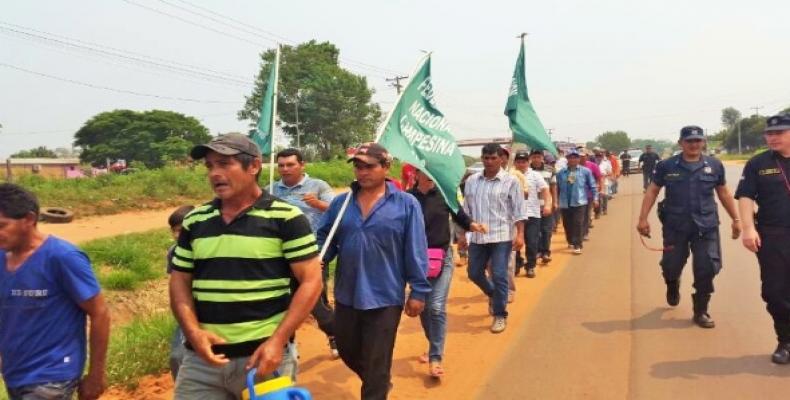Asunción, September 25 (teleSUR-RHC)-- Paraguayan farmers initiated a massive demonstration on Wednesday morning in the district of Santa Rosa of Aguaray in the department of San Pedro.
The mobilization was called for by the National Federation of Farmers (FNC) and will run until tomorrow, Saturday, in San Estanislao and other districts.
The FNC stated that small producers were “surrounded by the abandonment of national production, the aid policies, the implementation of a state terrorism and the militarization, as well as the marijuana production.”
Debates will be carried out before each march, addressing the issues of land (the unequal distribution of land), the ago-exporter model and the need for agrarian reform.
“In the current situation, the small producer does not have any market (to sell his products), and with low prices the majority of them cannot access credit, there is no agrarian insurance,” said the FNC leader Marcial Gomez in a press conference.
On the aid policy, he condemned the state strategy of declaring a state of national or departmental emergency as a way to provide ad hoc funds that will get lost through corruption, “with the complicity of local or national authorities.”
The FNC denounced Horacio Cartes' administration policies favoring agribusiness companies at the expense of small production. Many farmers leave their small farms and look for odd jobs, or are sometimes lured to the more lucrative but illicit business of marijuana production.
In Paraguay, an estimated 80 percent of the land is in the hands of only two percent of the population, one of the worst rates in the region.
The unequal distribution of land has been inherited from the 19th century, and became worse under General Alfredo Stroessner dictatorship (1954-1989). In this period, many pieces of land that belonged to the state were offered to relatives, friends, as well as political and military allies. This distribution is the source of many conflicts today, as they are legally up for land reform.
Then small and medium farmers, whose agriculture was feeding the country, were gradually pushed off their lands because of the new exportation model introduced in the 1970s, along with mechanization and soy.


